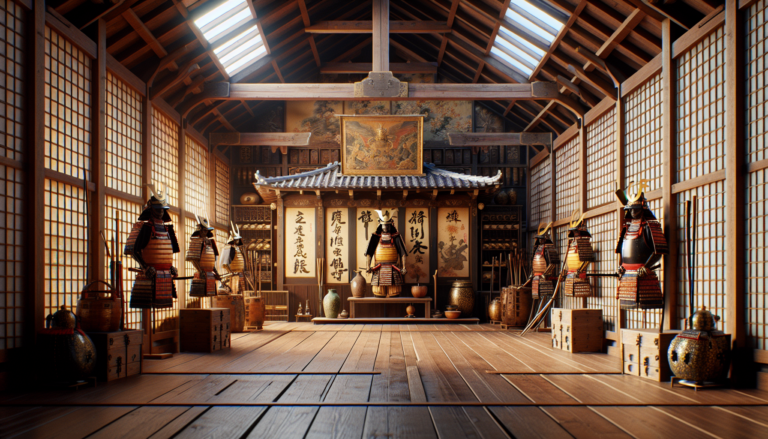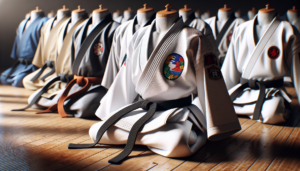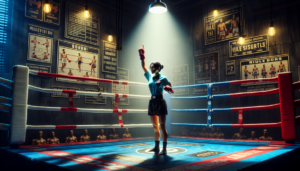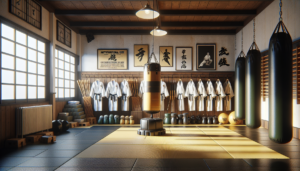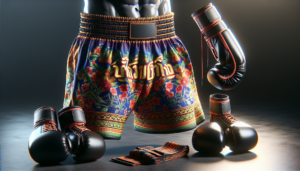Introduction to Samurai Martial Arts
Samurai martial arts are a fascinating aspect of Japanese history and culture, rooted in the Bushido code of honor and discipline. These ancient combat techniques, developed by the samurai warrior class, have had a profound influence on modern martial arts and continue to captivate practitioners and enthusiasts worldwide.
The samurai were renowned for their exceptional martial skills, which included a wide range of armed and unarmed combat techniques. These martial arts were not only essential for battlefield success but also served as a means of personal and spiritual development, reflecting the deep philosophical principles of Bushido.
The Bushido Code: The Heart of Samurai Martial Arts
At the core of samurai martial arts lies the Bushido code, a set of moral and ethical principles that guided the lives of these elite warriors. The Bushido code emphasized virtues such as loyalty, courage, honesty, and self-discipline, shaping the samurai’s conduct both on and off the battlefield.
The practice of martial arts was an integral part of a samurai’s life, serving as a means to cultivate these virtues and maintain their mental and physical readiness. Through rigorous training and dedication to their craft, samurai sought to embody the ideals of Bushido, striving for self-improvement and mastery of their techniques.
Historical Context: The Edo Period and the Rise of Samurai
The Edo Period (1603-1867) in Japanese history was a time of relative peace and stability, marked by the rule of the Tokugawa shogunate. During this era, the samurai class held a prominent position in society, serving as the military nobility and administrative elite.
The samurai’s role during the Edo Period shifted from active warfare to maintaining order and upholding the social hierarchy. This period saw the refinement and codification of many samurai martial arts, as well as the development of new techniques and styles.
Core Techniques of Samurai Martial Arts
Samurai martial arts encompass a wide range of techniques, each designed to address specific combat situations and reflect the samurai’s versatile skill set. These techniques can be broadly categorized into armed and unarmed combat, with a strong emphasis on weapons-based training.
Kenjutsu: The Art of Swordsmanship
Kenjutsu, the art of the sword, was the most iconic and revered of the samurai martial arts. The katana, a curved single-edged sword, was the samurai’s primary weapon and a symbol of their status and prowess. Kenjutsu training focused on developing a wide range of techniques, including drawing the sword (battōjutsu), striking, parrying, and counterattacking.
Kenjutsu also incorporated strategic elements, such as footwork, distancing, and timing, to outmaneuver and overcome opponents. The practice of kenjutsu was deeply intertwined with the principles of the Bushido code, emphasizing mental focus, discipline, and the cultivation of a calm and centered state of mind.
Kyudo: The Way of the Bow
Kyudo, or the Way of the Bow, is the traditional Japanese martial art of archery. Originating from the samurai’s need for long-range combat skills, kyudo emphasizes the importance of mental focus and discipline in mastering the bow.
In kyudo, the practitioner aims to achieve a state of oneness with the bow, the arrow, and the target. This requires a deep level of concentration and a harmonious integration of body, mind, and spirit. The practice of kyudo is not solely focused on hitting the target but also on the process and form of the shot itself, reflecting the samurai’s pursuit of perfection in their martial arts.
Jujutsu: Mastering Unarmed Combat
Jujutsu, a comprehensive system of unarmed combat, was an essential component of samurai training. This martial art focuses on grappling, throwing, and joint manipulation techniques, allowing the practitioner to defend themselves and subdue opponents without relying on weapons.
Jujutsu techniques emphasized the principle of using an opponent’s energy and momentum against them, rather than relying solely on physical strength. By mastering leverage, balance, and timing, a skilled jujutsu practitioner could effectively neutralize an attacker, regardless of their size or strength.
Modern Martial Arts Influenced by Samurai Techniques
The legacy of samurai martial arts extends far beyond the historical context of feudal Japan. Many modern martial arts have evolved from the techniques and principles developed by the samurai, adapting them to contemporary self-defense and combat sports.
Aikido: Harmonizing with the Opponent
Aikido, a modern Japanese martial art, is deeply rooted in the principles of samurai combat. Developed by Morihei Ueshiba in the early 20th century, aikido emphasizes the concept of harmonizing with an opponent’s energy and redirecting it to neutralize their attack.
Aikido techniques involve fluid, circular movements that allow the practitioner to blend with and control an attacker’s force. The goal is to resolve conflicts peacefully, reflecting the philosophical principles of non-violence and the pursuit of harmony. Aikido incorporates elements of jujutsu and kenjutsu, adapting them to a more defensive and non-aggressive approach.
Karate: The Okinawan Legacy
Karate, a martial art originating from the island of Okinawa, has its roots in the indigenous combat systems of the Ryukyu Kingdom and the influence of Chinese martial arts. Karate primarily focuses on striking techniques, incorporating punches, kicks, and defensive blocking.
While karate is not directly linked to the samurai martial arts of mainland Japan, it shares some common principles, such as the emphasis on discipline, mental focus, and the development of character through rigorous training. Karate’s evolution and global popularity have made it one of the most widely practiced martial arts worldwide.
Kendo: The Way of the Sword
Kendo, the modern Japanese martial art of sword fencing, is a direct descendant of the samurai’s kenjutsu traditions. Practitioners use bamboo swords (shinai) and protective armor (bogu) to engage in competitive matches and training.
Kendo emphasizes the development of technical skill, mental fortitude, and the cultivation of a strong spirit. Through the practice of kendo, practitioners strive to embody the virtues of the samurai, such as courage, respect, and self-discipline. Kendo has become a popular competitive sport and a means of preserving and promoting the martial heritage of the samurai.
Specialized Samurai Martial Arts
In addition to the core techniques of kenjutsu, kyudo, and jujutsu, samurai also practiced a wide range of specialized martial arts. These arts focused on specific weapons or combat situations, allowing the samurai to adapt to diverse battlefield conditions.
Naginatajutsu: The Art of the Halberd
Naginatajutsu involves the use of the naginata, a pole weapon with a curved blade, traditionally associated with female samurai. The naginata provided a versatile option for close-quarters combat, combining the reach of a spear with the cutting ability of a sword.
Naginatajutsu techniques emphasized fluid, sweeping movements and the ability to maintain distance and control the pace of the fight. The art of the naginata also found its place in the training of women, who were expected to defend their homes and families in times of conflict.
Bojutsu: Mastering the Staff
Bojutsu, the art of staff fighting, was another essential component of samurai martial arts. The bo, a six-foot staff, was a simple yet effective weapon that could be used for striking, thrusting, and blocking.
Bojutsu techniques emphasized the importance of proper distancing, timing, and leverage, allowing the practitioner to generate significant power and speed. The staff’s versatility made it a valuable weapon for close-quarters combat and a useful tool for non-lethal self-defense.
Iaijutsu and Battōjutsu: The Quick Draw Techniques
Iaijutsu and battōjutsu are specialized techniques within the broader art of kenjutsu, focusing on the rapid drawing and sheathing of the sword. These techniques were crucial for samurai, as the ability to quickly draw and strike with the sword could mean the difference between life and death on the battlefield.
Iaijutsu practice involves drawing the sword, cutting, and resheathing in one fluid motion, emphasizing speed, precision, and mental focus. Battōjutsu, on the other hand, focuses on drawing the sword and immediately engaging in combat, prioritizing the initial strike and the element of surprise.
The Legacy of Samurai Martial Arts
The impact of samurai martial arts extends far beyond the realm of combat techniques. These arts have played a significant role in shaping Japanese culture, values, and traditions, and continue to influence various aspects of modern society.
Influence on Modern Self-Defense and Military Training
The principles and techniques of samurai martial arts have been adapted and incorporated into modern self-defense systems and military training programs worldwide. The emphasis on discipline, situational awareness, and efficient use of force has proven invaluable in contemporary contexts.
Law enforcement and military personnel often study martial arts derived from samurai techniques, such as krav maga, Brazilian jiu-jitsu, and close-quarters combat systems. These arts provide practitioners with the skills and mindset necessary to handle high-stress situations and neutralize threats effectively.
Samurai Martial Arts in Fitness and Wellness
Beyond their practical applications, samurai martial arts have also found a place in the world of fitness and wellness. Many people practice these arts as a means of physical exercise, stress relief, and personal growth.
The discipline and focus required in samurai martial arts training can help individuals develop a stronger sense of self-awareness, mental resilience, and emotional balance. The emphasis on proper breathing, posture, and body mechanics can contribute to overall physical health and well-being.
Conclusion: The Enduring Impact of Samurai Martial Arts
Samurai martial arts represent a rich and fascinating aspect of Japanese history and culture, embodying the values, skills, and spirit of the warrior class. These arts, born from the need for effective combat techniques, have evolved into a means of physical, mental, and spiritual development.
The legacy of samurai martial arts continues to inspire and influence practitioners worldwide, whether through the practice of traditional arts like kenjutsu and kyudo, or the study of modern derivatives such as aikido and kendo. By engaging with these arts, individuals can connect with the timeless wisdom and warrior spirit of the samurai, while cultivating their own personal growth and self-discovery.
As we explore the depths of samurai martial arts, we gain a greater appreciation for the dedication, discipline, and artistry that define these ancient traditions. Through the continued practice and preservation of these arts, we ensure that the spirit of the samurai endures, guiding us towards a path of self-mastery and inner strength.

